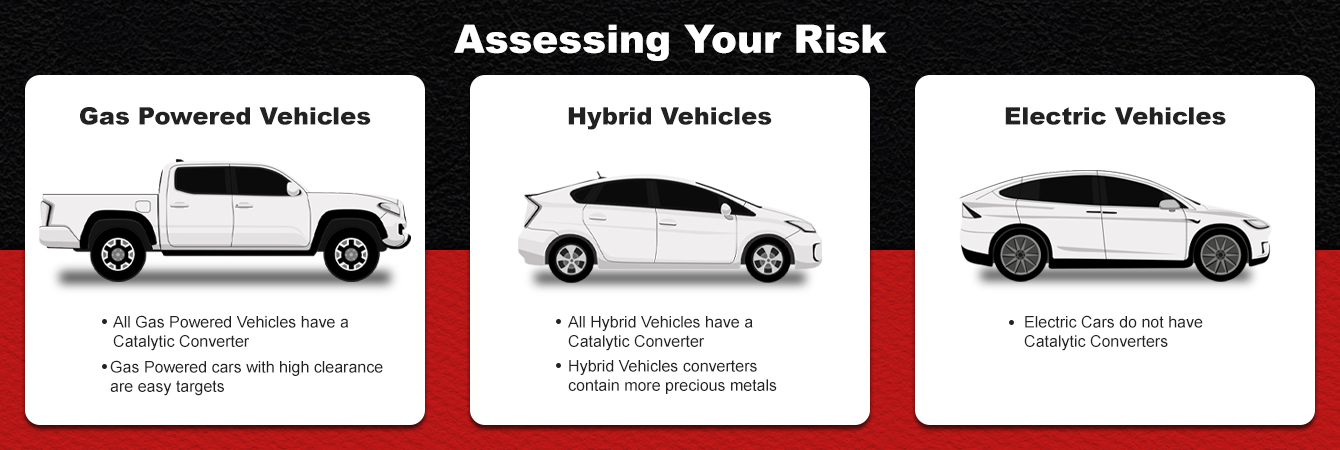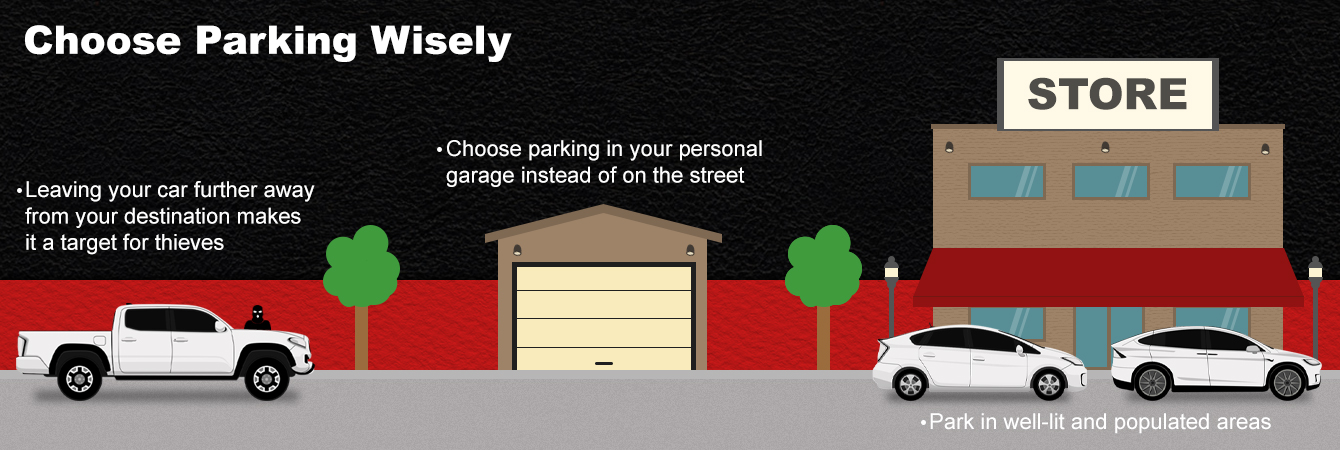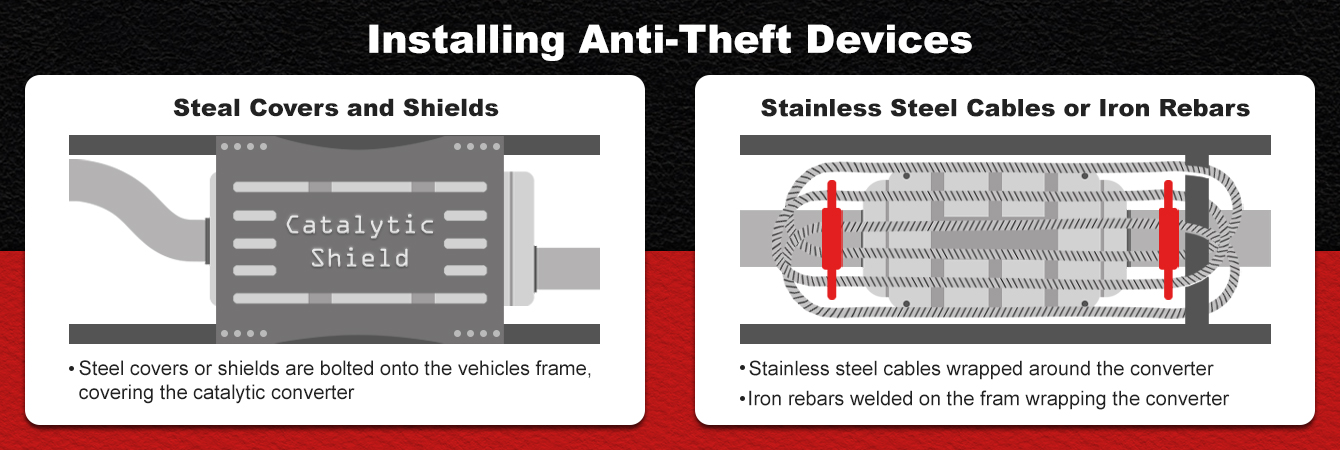How to Stop Your Catalytic Converter from Being Stolen

There has been a surge in Catalytic converter theft across the nation. Catalytic converters are commonly stolen because of the precious metals contained inside them. The precious metals include rhodium, palladium, and even platinum that is used in the emission conversion process. These metals, even in fairly small quantities, can be worth hundreds of dollars to the right recycler. Catalytic converters are also a huge target because they can be fairly quick and simple to remove from a vehicle, for an experienced thief at least. Luckily, there are a few strategies that you can implement to ensure that you are not the next victim, often costing hundreds or even thousands of dollars to replace.
How can I prevent my catalytic converter from being stolen? This is an excellent question with a few good answers. Some solutions cost nothing and others can end up costing a few hundred dollars and require professional installation. The following 5 steps can all help reduce your risk.

1. Assess Your Risk Level
The first step in preventing this type of crime from happening to you is to assess your risk level. Thieves know which vehicles have catalytic converters with more precious metals in them and they also know which vehicles are easier for them to quickly remove the converters. Often trucks and SUVs are hit the most by these thieves. Trucks and SUVs have much more clearance underneath making it easier to slide under and quickly using an electric saw cut the converters out. In this case, no car jacks are even needed and the thieves can be gone in as quickly as two minutes. The Toyota Prius, and other hybrid vehicles, are also a massive target as these vehicles have converters that contain more precious metals due to the low emission nature of the vehicles. With all of that in mind, you can decide which one of the following theft deterrents would be best for you.

2. Choose parking wisely
If your vehicle has a relatively low risk for catalytic converter theft, then simply parking your car in a well-lit and highly trafficked area may be enough protection to act as a deterrent to would-be criminals. Security cameras can also play a big role in helping to deter theft. If there are enough cameras installed to provide full surveillance coverage of the area as well as entrances/exits, it can be another big deterrent. Of course, this method is by no means fail-proof, but it can make a difference and costs little to nothing to implement.

3. Installing Anti-Theft Devices
Are there anti-theft devices for catalytic converters? There are a few different types of Catalytic anti-theft devices that are specifically designed to make it harder to quickly cut out your valuable part. One such device is a steel catalytic converter cover or shield. Cages can also be made out of steel rebar and can also be fashioned around the converter. You can also install stainless steel cables around the device to help prevent tampering. So if your vehicle is in the higher risk category, or you just want to ensure the maximum level of protection, you may want to install one of these anti-theft devices. All of these devices are meant to slow down the physical removal of your catalytic converter. In the end, all of these can preventive devices can be removed with the right tools, however simply adding that extra barrier and increasing the difficulty of removal will often make criminals move on to easier targets. The downside of this strategy is obviously the cost. Depending on your method and vehicle some of these options can run anywhere from $100 to $500 or more, which is still cheaper than replacing a stolen converter.

4. Make Your Catalytic Converter Easily Recognizable
There are some low-cost alternatives to installing anti-theft devices. This strategy involves marking your catalytic converter so that metal recyclers will be much less likely to purchase stolen parts, in turn making them less appealing to thieves. Painting your catalytic converter with a high-temperature and highly visible fluorescent paint makes identification of a stolen part fairly obvious. That method combined with etching your vehicle's license plate number onto the converter itself will ensure a hard time reselling your stolen part.
5. Check Your Insurance Policy
As a last resort you may want to check if your insurance policy covers catalytic converter theft. Usually, comprehensive coverage on your auto insurance policy will cover replacing stolen converters and any damage incurred during the theft. Depending on your policy you may have to pay a deductible. In my personal case, the deductible was $500, not cheap, but also not the $2,500 actual replacement cost. You can’t plan for everything in life which is why having a good insurance policy is a great idea.

